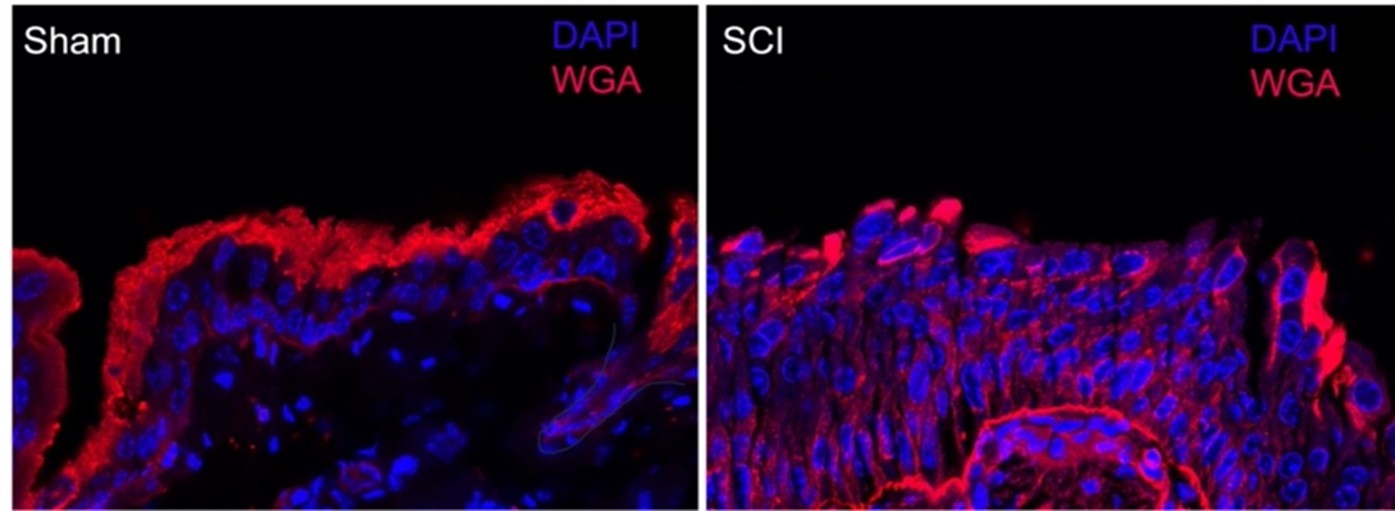Nephrology
Session: Nephrology 1
14 - Spinal Cord Injury is Associated with Loss of the Glycosaminoglycan Layer in Mice
Saturday, May 4, 2024
3:30 PM - 6:00 PM ET
Poster Number: 14
Publication Number: 14.1379
Publication Number: 14.1379
.jpeg.jpg)
Bhanu Sharma, Bachelors in Neuroscience (he/him/his)
Research Technician
University of Pittsburgh
Pittsburgh, Pennsylvania, United States
Presenting Author(s)
Background: Spinal cord injury (SCI) leads to urothelial injury and poor repair. People with SCI are at increased risk for urinary tract infection (UTI), which cannot be fully explained by clinical factors. The urothelium is covered by the glycosaminoglycan (GAG) layer, which plays a role in protection against UTI. Although the urothelial injury that occurs post-SCI has been well-described, there is almost a complete paucity of descriptions of the GAG layer in the setting of SCI in the literature. Given that people with SCI have increased risk of UTI that cannot be fully explained by clinical risk factors, injury to the GAG layer may play a role in the pathophysiology of increased risk of UTI in people with SCI.
Objective: To compare the presence and distribution of the GAG layer in mice with and without SCI.
Design/Methods: We performed spinal cord transection between T8 and T9 in 9 female C57BL/6 mice to induce SCI and performed a sham surgery in 8 female C57CBl/6 mice. Mice were sacrificed at 7 days post-SCI (or sham surgery) and their bladders harvested. Bladders were used for immunofluorescence. We stained each bladder for wheat germ agglutinin (WGA; a non-specific stain for glycans) and DAPI. Qualitative differences were examined between groups.
Results: We examined 12 bladder rings from 9 mice with SCI and 8 bladder rings from 8 sham mice. As expected, the urothelium was thicker in mice with SCI compared to sham mice. Sham mice had consistent urothelial coverage by the GAG layer. Comparatively, SCI mice had patchy loss of the GAG layer at 7 days post-SCI, with some areas with coverage, and some urothelium completely lacking the GAG. Additionally, GAG staining was more intense in sham compared to SCI mice. (Figure 1).
Conclusion(s): Mice with SCI have patchy loss of the GAG layer at 7 days post-SCI compared to sham mice.

